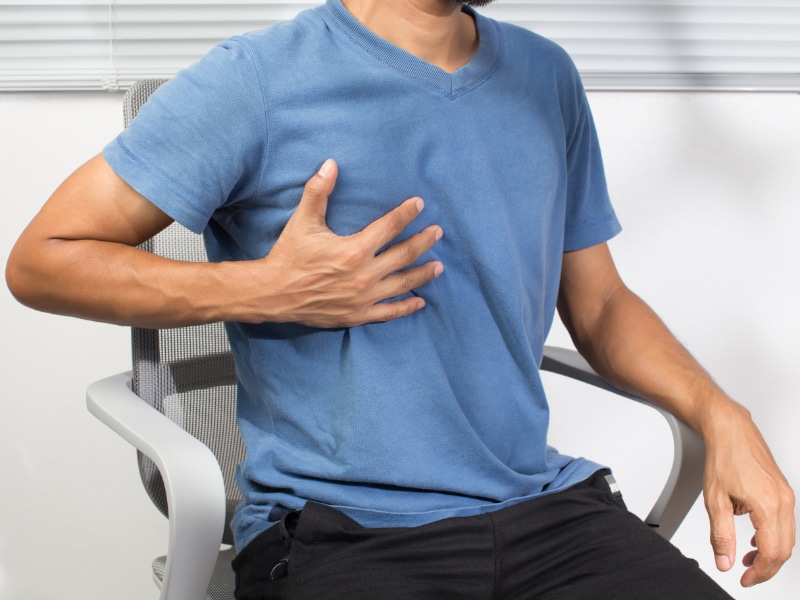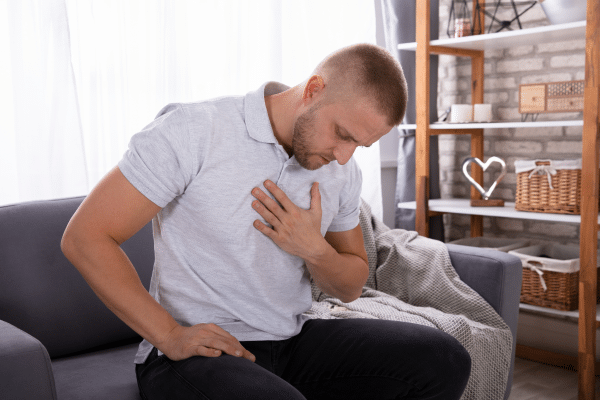
Gynecomastia, characterized by increased breast tissue growth in men, is often linked to hormonal imbalances, particularly an excess of estrogen. Learn more about what causes gynecomastia in one or both breasts.
Newborns, boys during puberty, and older males may get gynecomastia because of customary hormone changes. Usually, this condition isn’t a severe issue, but it can be challenging psychologically for some men.
Males with idiopathic gynecomastia induced breast enlargement may experience breast pain and feel embarrassed because of their more feminine chest. This breast growth can cause a loss of self-confidence and self-esteem.
The good news is that this condition often fades independently without medical intervention. But if the problem persists, you could need Houston gynecomastia surgery.
Gynecomastia Symptoms
Most men with this condition don’t have symptoms, but the most common issues are:
- Pain in the breasts, especially with adolescents
- Breast tissue that is swollen
- Tenderness in the male breast
- Sensitive nipples, including chafing from clothing
Learn What Causes Gynecomastia
A reduction in testosterone production usually causes gynecomastia compared to estrogen. This decrease can be due to various health conditions that block testosterone effects or boost the estrogen level.
Some things that can disrupt hormone levels include:
Natural Variations
Testosterone and estrogen are responsible for sex characteristics for both genders. Testosterone controls the traits for men, including body hair and muscle mass. Estrogen is responsible for female traits, including breast enlargement.
It’s common to think of estrogen as something only women have. But men produce it in smaller amounts, usually. But levels of the female hormone out of balance can lead to gynecomastia.
If a baby has gynecomastia, it’s probably because of the influence of the mother’s estrogen. The excess breast tissue should fade after two or three months.
Male teens with pubertal gynecomastia probably have higher estrogen levels during puberty. As a result, in most cases, the swollen tissue will decrease in size within one or two years.
Men between 50 and 80 may develop gynecomastia as testosterone levels drop with aging. But many men with the issue don’t have symptoms.
Medications
Many medications can cause this problem in men and boys:
- Medications for an enlarged prostate or prostate cancer treatment. Some of the medications that prostate cancer patients commonly take include Proscar, Propecia, and Carospir.
- Anabolic steroids that treat deficiencies in hormones are delayed puberty.
- AIDs drugs can cause gynecomastia, especially Sustiva.
- ADHD drugs with amphetamines, including Adderall.
- Diazepam and other anti-anxiety drugs.
- Ulcer drugs, including Tagamet HB.
Recreational Drugs
Some other substances that can cause gynecomastia are:
- Marijuana
- Heroin
- Methadone
- Anabolic steroids for building muscle
- Alcohol
Health Problems
Several health issues can cause this condition by changing the patient’s hormone balance.
- Aging: Changes in hormone levels as we age can lead to gynecomastia, especially for people who are overweight.
- Tumors: Tumors in the adrenal glands, testes, and pituitary gland can make hormones that change the balance between testosterone and estrogen.
- Kidney failure: About 50% of people who get dialysis have gynecomastia because of changes in hormone levels.
- Liver failure: Hormone level changes related to liver disease and medications to treat it can cause gynecomastia.
- Hypogonadism: This condition reduces testosterone production and can lead to gynecomastia.
- Malnutrition: When the body doesn’t get enough nutrients, your testosterone level drops, and estrogen levels stay the same. But once you eat a healthy diet again, the gynecomastia usually goes away.
Diagnosing Gynecomastia
Your doctor will do a physical exam, check your symptoms, and go over your medical history. They also may do a blood test to check your hormone levels.
Gynecomastia and male breast cancer can produce lumps in the breast, so your doctor could order an ultrasound to view the growths in your breasts. Or, they can order a mammogram to look at changes in the male breast tissue to determine if there is a concern about breast cancer or if you are suffering from gynecomastia.
Treating Gynecomastia
Some patients don’t need treatment for gynecomastia. If a drug or other substance contributes to breast enlargement, not taking the drug may solve the problem. If a disease is inducing male breast enlargement, it should go away when the condition is treated.
If surgery is required, the plastic surgeon will perform liposuction or breast reduction on the male breasts to remove the extra body fat or glandular tissue. Once this tissue is removed, it won’t grow back. But if you were taking substances that caused the problem, remember that the gynecomastia may return unless you stop taking them.
How To Prevent Gynecomastia
There are several things you can do to prevent gynecomastia or keep it from returning possibly:
- Don’t take anabolic steroids, amphetamines, heroin, marijuana, or androgens.
- Drink alcohol in moderation.
- Review your medicine list with your physician to determine if any of them are causing the problem.
Gynecomastia is a problem for many men, but it’s treatable and can be prevented. So, talk to your doctor today to learn more about gynecomastia treatments.
Questions and Answers
Will working out help get rid of my gynecomastia?
Targeting the upper pectoral muscles won’t resolve gynecomastia; it may accentuate the roundness. Chest exercises alone won’t address this concern. However, if it’s fat vs. gynecomastia it could help burn some of the fat.
What foods help reduce gynecomastia?
Ease breast discomfort from gynecomastia with anti-inflammatory foods. Incorporate fatty fish, leafy greens, sweet potatoes, berries, citrus fruits, and beans for relief.
Does testosterone help with gynecomastia?
Although men naturally produce estrogen, higher testosterone levels typically prevent breast tissue growth. Hormonal imbalances, often with unknown causes, can disrupt this balance, leading to the growth of a man’s breasts.
What’s the pinch test for gynecomastia?
Using your thumb and forefinger, delicately pinch the nipple, exploring the entire areola. Look for a firm lump or disc-shaped mass, typically below the nipple, occasionally off-center.
Request a Gynecomastia Consultation

References
Enlarged Breasts In Men (Gynecomastia). (n.d.). Accessed at https://www.mayoclinic.org/diseases-conditions/gynecomastia/symptoms-causes/syc-20351793#:~:text=Gynecomastia
Enlarged Male Breast Tissue. (n.d.). Accessed at https://my.clevelandclinic.org/health/diseases/16227-enlarged-male-breast-tissue-gynecomastia
What Is Gynecomastia? How Does It Affect Men And Boys? (n.d.). Accessed at https://www.webmd.com/men/what-is-gynecomastia












